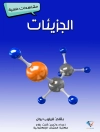The physical properties associated with the saturated and trans fats obtained through partial hydrogenation of vegetable oils (PHVOs) provide the solid fat content, melting and textural properties that consumers require in food products like butter, margarines, vegetable creams, spreads, and confectionary fats. However, saturated and trans fats increase low density lipoprotein, while trans fats also lower high-density lipoprotein serum levels. These indicators increase the risk of developing cardiovascular disease, type II diabetes, stroke, and have recently been associated with metabolic syndrome. Consequently, regulatory agencies worldwide have passed legislation restricting the addition of PHVOs and their derivatives (i.e., shortenings) to food products. This has lead research groups worldwide to investigate different mechanisms to provide structural and physical properties to edible, healthy unsaturated oils. The overall objective is to achieve similar functional properties to those provided by PHVOs and shortenings to food products.
This book encompasses the work of leading researchers discussing, from a scientific and technological perspective, the latest and most innovative approaches to structure edible oils without the use of trans fats. Additionally, the authors discuss practical uses and technical limitations associated with the use of ‘structured edible oils’ in different food systems. Appealing to researchers and professionals working in lipid science, food chemistry and fat metabolism, it fills the gap in the literature for a book in this fast-changing field.
Tabla de materias
Concentrated O/W Emulsions Stabilized by Proteins: A Route to Texturize Vegetal Oils Without Using Trans or Saturated Fats;
Alternative Oil Structuring Techniques: Oil Powders, Double Emulsions and Oil Foams;
Use of High-intensity Ultrasound to Structure Edible Fats;
Pulse and Oilseed Protein-based Oil Structuring for Baking Application;
Physicochemical Properties and Polymorphic Behavior of Tropical Fats: Their Potential and Practical Use in Trans-free Food Systems;
Edible Oleogels Produced with Fatty Alcohols: The Use of Policosanol as an Oleogelator;
On the Applicability of the Oryzanol–Sitosterol Structuring System;
Structuring Vegetable Oils with Monoglycerides and Monoglyceride–Lecithin or Monoglyceride–Ethylcellulose Mixtures;
Functionality of Natural Waxes in Hybrid Fat Crystal Networks;
Glycerolysis-structured Lipid Systems;
Modulating the Rheology of Oleogels to Mimic the Functionality of Commercial Fats;
Sensory Properties and Aromatics Profile of Edible Oleogels;












